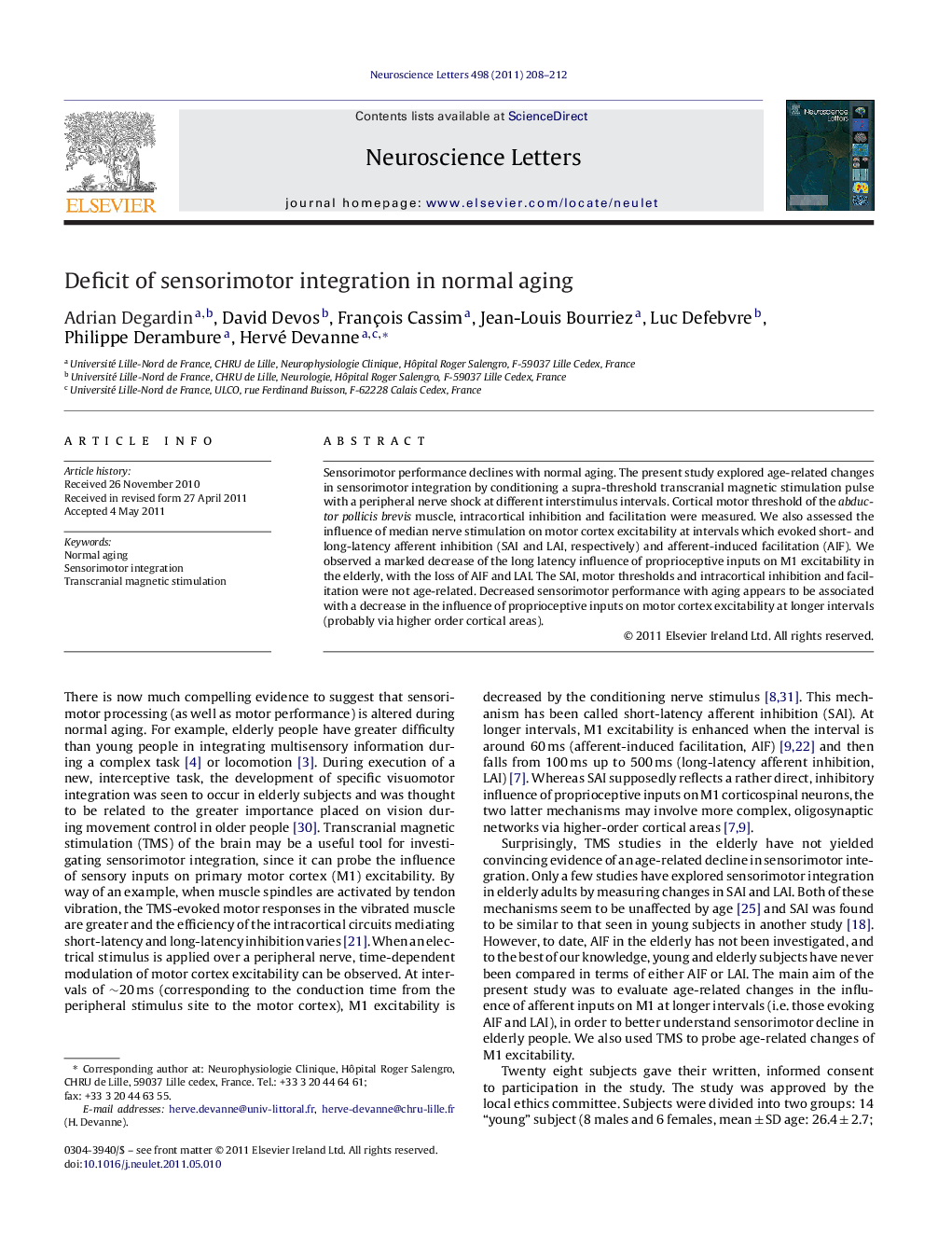| کد مقاله | کد نشریه | سال انتشار | مقاله انگلیسی | نسخه تمام متن |
|---|---|---|---|---|
| 4345161 | 1296707 | 2011 | 5 صفحه PDF | دانلود رایگان |

Sensorimotor performance declines with normal aging. The present study explored age-related changes in sensorimotor integration by conditioning a supra-threshold transcranial magnetic stimulation pulse with a peripheral nerve shock at different interstimulus intervals. Cortical motor threshold of the abductor pollicis brevis muscle, intracortical inhibition and facilitation were measured. We also assessed the influence of median nerve stimulation on motor cortex excitability at intervals which evoked short- and long-latency afferent inhibition (SAI and LAI, respectively) and afferent-induced facilitation (AIF). We observed a marked decrease of the long latency influence of proprioceptive inputs on M1 excitability in the elderly, with the loss of AIF and LAI. The SAI, motor thresholds and intracortical inhibition and facilitation were not age-related. Decreased sensorimotor performance with aging appears to be associated with a decrease in the influence of proprioceptive inputs on motor cortex excitability at longer intervals (probably via higher order cortical areas).
► In this study we explored age-related changes in sensorimotor integration.
► We assessed the influence of median nerve stimulation on motor cortex excitability at intervals which evoked inhibition or facilitation.
► We observed a marked decrease of the long latency influence of proprioceptive inputs on primary motor cortex excitability in the elderly.
► We found no change of intracortical inhibition and facilitation within the primary motor cortex.
► We conclude that decreased sensorimotor performance with aging appears to be associated with a decrease in the influence of proprioceptive inputs.
Journal: Neuroscience Letters - Volume 498, Issue 3, 12 July 2011, Pages 208–212